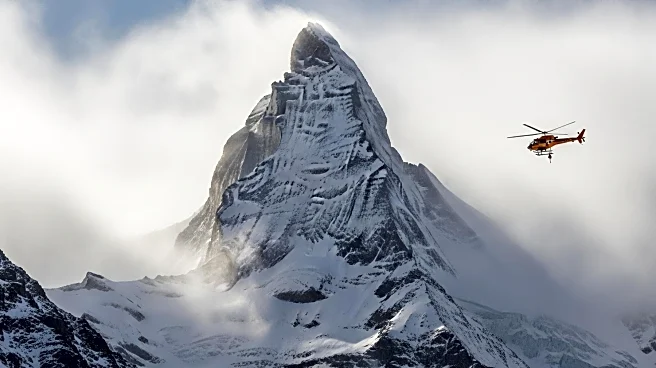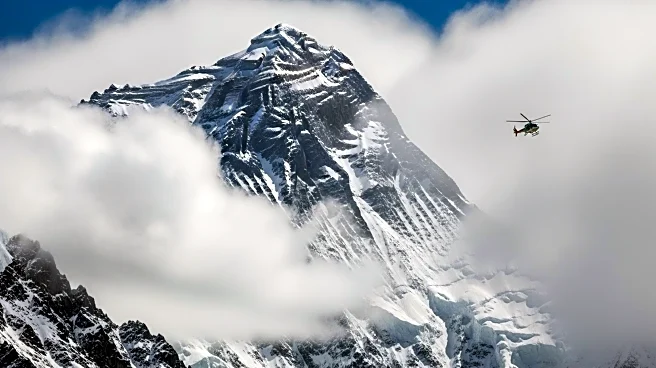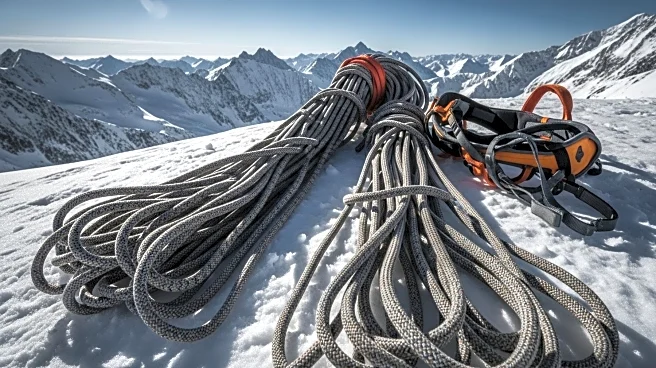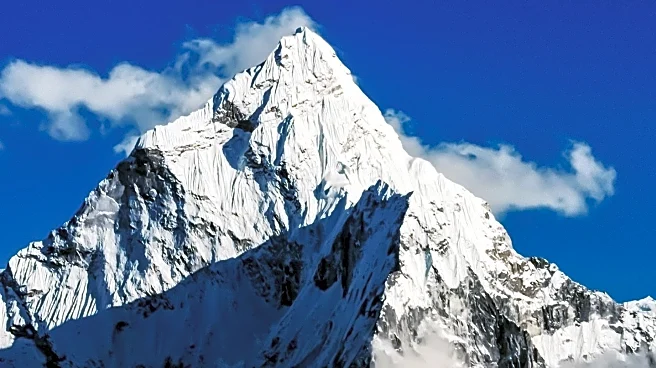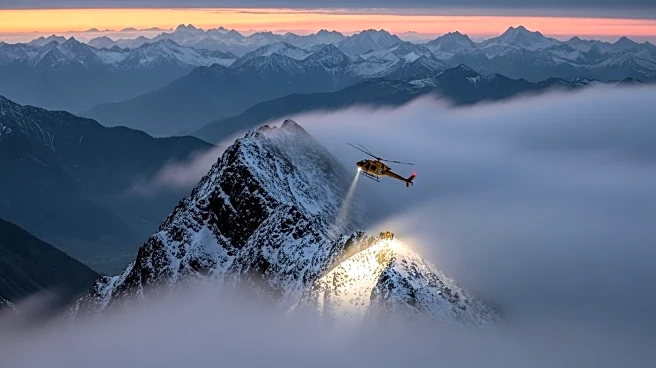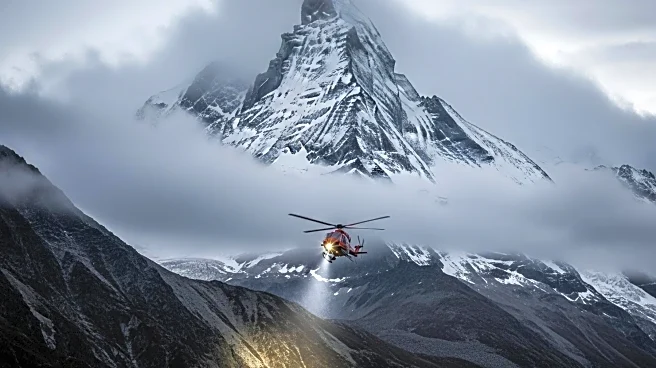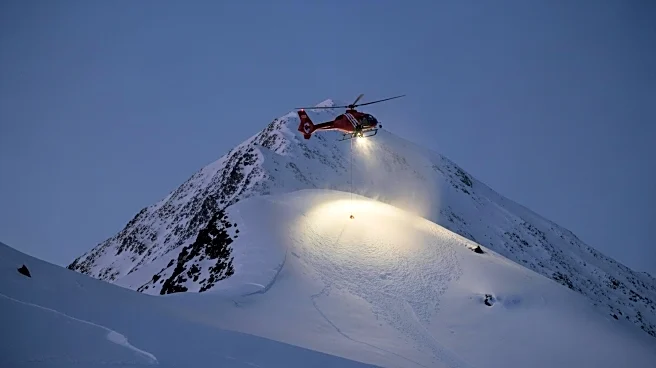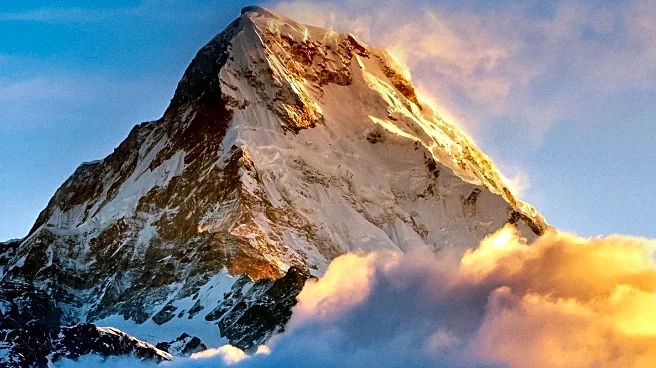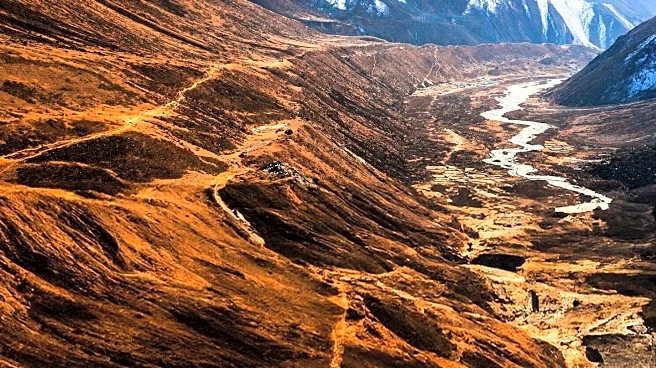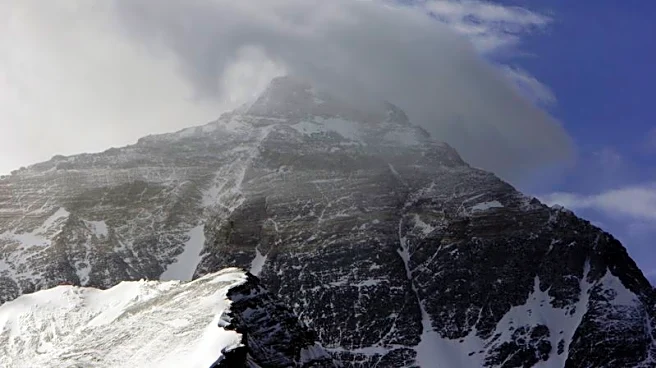What's Happening?
A severe blizzard has struck the region around Mount Everest, leaving hundreds of hikers stranded. The storm, which hit on Friday evening, has trapped hikers at elevations exceeding 16,000 feet. Rescue operations have been initiated, with 350 hikers already evacuated to safety, while over 200 remain stranded. The blizzard has been described as unprecedented for October, with snowfall reaching depths of three feet, causing tents to collapse under the weight. The adverse weather conditions have also led to fatalities, with reports of one hiker succumbing to hypothermia and altitude sickness. The storm coincided with a national holiday in China, leading to an influx of tourists in the area.
Why It's Important?
The incident underscores the increasing unpredictability of weather patterns in the Himalayas, potentially linked to climate change. The blizzard's timing during a typically dry season highlights the challenges faced by the tourism industry and mountaineers who rely on stable weather conditions for safe trekking. The situation has prompted a large-scale rescue operation, involving local villagers and rescue teams, to clear paths and ensure the safety of those trapped. The event raises concerns about the future of mountaineering in the region, as climate change may lead to more frequent and severe weather disruptions, impacting both safety and the local economy dependent on tourism.
What's Next?
Rescue efforts are ongoing, with teams working to reach the remaining stranded hikers. The situation is being closely monitored by local authorities, and further evacuations are expected as conditions permit. The incident may prompt a reevaluation of safety protocols and emergency preparedness for trekking in the Himalayas. Additionally, there may be increased scrutiny on the impact of climate change on high-altitude weather patterns, potentially leading to new guidelines for climbers and tourists visiting the region.

